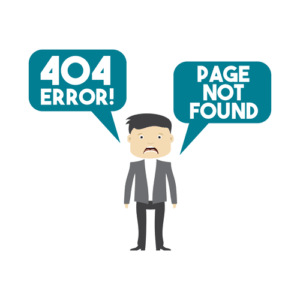Content

An especially useful feature is the Data Auditor which helps you to make sure your business data is correct, protected, and balanced. Although Quickbooks has many useful features, it works best with other Intuit products, and syncing up your data from outside sources isn’t always simple.
- That’s important for things like setting prices, getting insured, budgeting, working out taxes, and selling your business.
- This data helps an organization be more responsive, up-to-date, and flexible.
- Sales are also being made at the same time, turning inventory into cash.
- Stock rotation is the practice of changing the way inventory is displayed on a regular basis.
- Securities and Exchange Commission and other federal and state agencies.
- When you sell goods to a customer and generate an invoice, it may be entered into your accounting system immediately but the goods may not ship until the following day or later.
The ‘Controlling Inventory’ module focuses on internal controls, perpetual versus periodic counting, conducting a physical inventory, and the impact of measurement error. The ‘Valuing Inventory’ module concentrates on the four inventory costing methods and the impact each has on your financial statements. We also walk through ‘Assessing Inventory Management’, which breaks down efficiency metrics and the impact of the inventory methodology you choose on your financial statement analysis.
Even though you have bought $50 of stock, at the end of the month you are $75 down on the previous month (opening balance $100 – closing balance $25). This means the total spend on products contributing to sales in the month is $125 ($50 purchases + $75 inventory shipped).
Accounting Principles I
LIFO Inventory Accounting Method – Accountants who opt for the LIFO method assume items purchased or manufactured last are sold first, so the items remaining in stock are the oldest. As such, this method does not follow most companies’ natural inventory flow and is banned by International Financial Reporting Standards. When prices rise, the last units purchased are the first used, so the cost of goods trend higher and results in a lower amount of operating earnings and fewer income taxes to pay. Companies using the LIFO method also struggle with obsolete inventory. The number of online users since 1995 has grown from 16 million to approximately 2.5 billion in 2012. Because of all these opportunities and competition, it is essential for businesses to keep track of the goods they are selling online, as well as their finances.

This application for motor fuel was first developed and implemented by Petrolsoft Corporation in 1990 for Chevron Products Company. The ending inventory is determined at the end of the period by a physical count of every item and its cost is computed using inventory calculation Inventory Accounting methods such as FIFI, LIFO and weighted averages. In a periodic inventory system, no continuous record of changes is kept. The yearly inventory purchases are recorded in the purchases account, which is a ledger listing all inventory purchases and their costs.
Need An Advanced Inventory Management Software? Try Zoho Inventory
Secondary packing is the packaging of the finished good and can include labels or SKU information. Components are similar to raw materials in that they are the materials a company uses to create and finish products, except that they remain recognizable when the product is completed, such as a screw. Raw materials are the materials a company uses to create and finish products. When the product is completed, the raw materials are typically unrecognizable from their original form, such as oil used to create shampoo. Regardless of the fact that inventory can be described and classified in numerous ways, it’s ultimately its management that directly affects an organization’s order fulfillment capabilities.
Costs will vary by supplier, fluctuate at different times of the year depending on availability, or increase as time goes by. The application of FIFO, LIFO or weighted average will indicate how your business should calculate the item cost and do so consistently throughout the year despite changes in pricing.
- If you aren’t utilizing the best inventory management methods, you’ll experience far more than your fair share.
- The components are scanned again when incorporated into the computer.
- When this happens, the right stock has to be removed from the inventory records.
- They also roll the cost of new inventory purchases into the cost of existing inventory to determine a new weighted average cost that is readjusted as more inventory is purchased or manufactured.
With Brightpearl & Sage Intacct together you can scale your business, deliver better customer experiences and automate workflows to remove preventable errors with ease. Grant Olsen is a writer specializing in small business loans, leadership skills, and growth strategies. He is a contributing writer for KSL 5 TV, where his articles have generated more than 6 million page views, and has been featured on FitSmallBusiness.com and ModernHealthcare.com. The clock factory example given above is helpful as far as the numbers go, but it also presents things in a much too precise manner. Simple tools to send invoices, track expenses and manage your business finances. Innovative dashboard, business insights and custom invoicing – all through your Lendio account. Time – The time lags present in the supply chain, from supplier to user at every stage, requires that you maintain certain amounts of inventory to use in this lead time.
The Effects Of Revenue Recognition On Financial Statements
Controlling purchasing and evaluating turns helps management understand what they need to stock and what they need to get rid of. Each of these different categories is important and managing them is key to any business’ survival. Inventory control is one of the most important concepts for any business especially retailers. Since they purchase goods from manufacturers and resell them to consumers at small margins, they have to manage their purchasing and control the amount of cash that is tied up in merchandise. Work in process inventory consists of all partially finished products that a manufacturer produces. As the unfinished cars make their way down the assembly line, they are considered a work-in-progress until they are finished. For instance, a sandwich shop’s delivery truck is not considered inventory because it has nothing to do with the primary business of making and selling sandwiches.
When you sell goods, you recognize the reduction in inventory as well. If your accounting method shows a $20,000 COGS and your prior inventory level was $100,000, your new inventory balance would be $80,000. When you acquire new inventory, you add the costs of acquisition to the value of inventory. Inventory is an asset and it is recorded on the university’s balance sheet. Inventory can be any physical property, merchandise, or other sales items that are held for resale, to be sold at a future date. Departments receiving revenue (internal and/or external) for selling products to customers are required to record inventory. Most accounting software use a perpetual inventory system to track and update inventory purchases, sales and the cost of goods in real time.
Important features of good accounting software for inventory is the ability for it to account for sales tax. With periodic accounting, the purchase value is added directly to the Profit and Loss report or Income Statement when you buy the stock, and the inventory adjustment is added at the end of the month. You can only get an accurate profit report once a month, after all of the calculations are made. Admittedly, FreeAgent is geared towards UK-based businesses, though, so its usefulness outside of the United Kingdom is limited. That being said, the company does have plans to expand internationally and is definitely one to watch in the small business accounting software space. Another popular accounting software solution used by small businesses is Freshbooks, which offers many of the same invoicing and transaction-tracking features as QuickBooks.
The Experts Guide To Field Service Management
Inventory, which describes any goods that are ready for purchase, directly affects an organization’s financial health and prosperity. Submit By submitting this form, you agree to the processing of personal data according to our Privacy Policy.
Using LIFO accounting for inventory, a company generally reports lower net income and lower book value, due to the effects of inflation. Due to LIFO’s potential to skew inventory value, UK GAAP and IAS have effectively banned LIFO inventory accounting. LIFO accounting is permitted in the United States subject to section 472 of the Internal Revenue Code. If specific inventory items have not been identified, businesses can set up a reserve for inventory write-offs.
Companies that make numerous sales of products with relatively small unit costs usually employ the periodic accounting method. Such companies include grocery stores, department stores, and drug stores. Companies that make fewer sales of products with higher unit costs, however, use a perpetual inventory system. The perpetual inventory system is updated continuously, not periodically. This systems requires that companies keep track of merchandise purchases at the time of acquisition and the cost of goods sold at the time of sale. Hence, companies using this system have an account for merchandise acquisitions and for the cost of goods sold. A company’s inventory is all of its merchandise intended for sale to its customers in the normal course of business.
But without factoring in costs not directly tied to the production process – like shipping, advertising and sales force costs, etc. With the Cost of Sales accounting method, if you sell goods to a customer before receiving the purchase invoice that reflects the actual cost value, how do you calculate the cost of sale transaction? With this technique, you still receive the inventory so it reflects in your sales channels, but you give it a zero value to prevent accounting transactions from being made. When you do a stock take, the items show in stock, but your Balance Sheet is not affected. Similarly, when you make a sale, no accounting transactions are made since the asset has no value. If you’re using Periodic Accounting, don’t include the consignment inventory in the stock valuation at the end of the period. For example, Brightpearl helps you calculate customer lifetime value, average order value, profit margin, and more.

The total in purchases account is added to the beginning balance of the inventory to compute the cost of goods available for sale. At the end of the year, a physical inventory count is done to determine the ending inventory balance and the cost of goods sold.
Company
A company may use either a periodic or perpetual inventory system to maintain its inventory records. A periodic system relies upon a physical count to determine the ending inventory balance, while a perpetual system uses constant updates of the inventory records to arrive at the same goal.
- As the name suggests, COGS refers to the amount it cost a business to produce the products it sold, including everything that went into it – materials, labour, tools used, etc.
- If your company sells similarly priced products, then this may be a viable option.
- You can set up your SOS Inventory account to keep track of all the costs and sales throughout the year to make analyzing data for any period very easy.
- Although Quickbooks has many useful features, it works best with other Intuit products, and syncing up your data from outside sources isn’t always simple.
- A separate account such as inventory write-off expense account is included with the other inventory accounts.
- The direct material inventory reflects all the materials the company uses to make a product.
Some businesses choose to recognize the cost of sale at the same time as the invoice date, which makes relative profit reporting easier since the cost of sale and revenue appear in the same period. Other businesses prefer to recognize the cost of sale at the time that the goods are shipped, i.e. the time that the delivery happens. Although it’s one of the better subscription-billing tools on the market, keep in mind that Pabbly isn’t an all-in-one accounting solution like some of the products on this list. That means that if your business https://www.bookstime.com/ relies on income from multiple sources, rather than subscriptions alone, you may want to consider more general-purpose accounting software. QuickBooks Accounting software was built by Intuit as an easy-to-use accounting solution for small- and medium-sized businesses. It allows you to organize your accounting data on the cloud while tracking sales and creating, generating, and transferring invoices. Finished goods inventories remain balance-sheet assets, but labor-efficiency ratios no longer evaluate managers and workers.
How To Calculate Inventory
These are used in process of manufacture and as such these are neither raw material nor finished goods. Stock Keeping Unit SKUs are clear, internal identification numbers assigned to each of the products and their variants. SKUs can be any combination of letters and numbers chosen, just as long as the system is consistent and used for all the products in the inventory. An SKU code may also be referred to as product code, barcode, part number or MPN (Manufacturer’s Part Number). Economies of scale – Ideal condition of “one unit at a time at a place where a user needs it, when he needs it” principle tends to incur lots of costs in terms of logistics. So bulk buying, movement and storing brings in economies of scale, thus inventory. Inventory management is a discipline primarily about specifying the shape and placement of stocked goods.
- While the inventory is in the retailer’s store, you still own it and that needs to be reflected on your Balance Sheet.
- Service inventory is a management accounting concept that refers to how much service a business can provide in a given period.
- Your inventory tracking system should be tracking the inventory book balance.
- For distributors who send inventory to a retailer, invoicing doesn’t occur until that retailer has sold said inventory.
Retailers typically only list one type of merchandise on their balance sheet where as manufacturers tend to list the three different categories of inventory separately. The periodic inventory system is simple and only requires an inventory spreadsheet to keep track of sales and goods remaining in stock. Basically, a count is performed periodically throughout the year to see what was sold and what was left. Although this is a very simple way to keep track of merchandise, it has many downsides.
The cost for shipping and taxes will appear as a loss on your Income Statement or Profit and Loss report. To ensure accuracy and efficiency, sales order processing, profit and loss tracking, and asset management need to function from a single software platform. Integrating accounting and inventory software together saves time and eliminates double data entry by allowing information to flow unhindered between the two solutions. When sales orders come in and purchase orders go out, the inventory software can alert the accounting software to update the general ledger and generate invoices.
The FIFO method aligns with inventory movement in many companies, which makes it a common choice. Prices also rise each year, so accountants who assume the earliest items are the first used can charge the least expensive units to the cost of goods sold first. As a result, the cost of goods trends lower and leads to a higher amount of operation earnings and more taxes to pay. It also means that companies use oldest items first and don’t have to worry about expiration dates or inventory that does not move. This applies to businesses that choose not to track cost per inventory unit for each separate purchase delivery. Instead, inventory value is based on the average cost of items throughout the relevant period.
Summary Of Ias 2
This way business owners are able to keep track of accurate COGS figures and adjust for obsolete inventory or scrap losses. Businesses need to maintain their inventory to have an available supply of goods that meets the demand of their customers. By using inventory accounting, they can keep track of these goods and make sure they have enough stock for efficient production and sales.